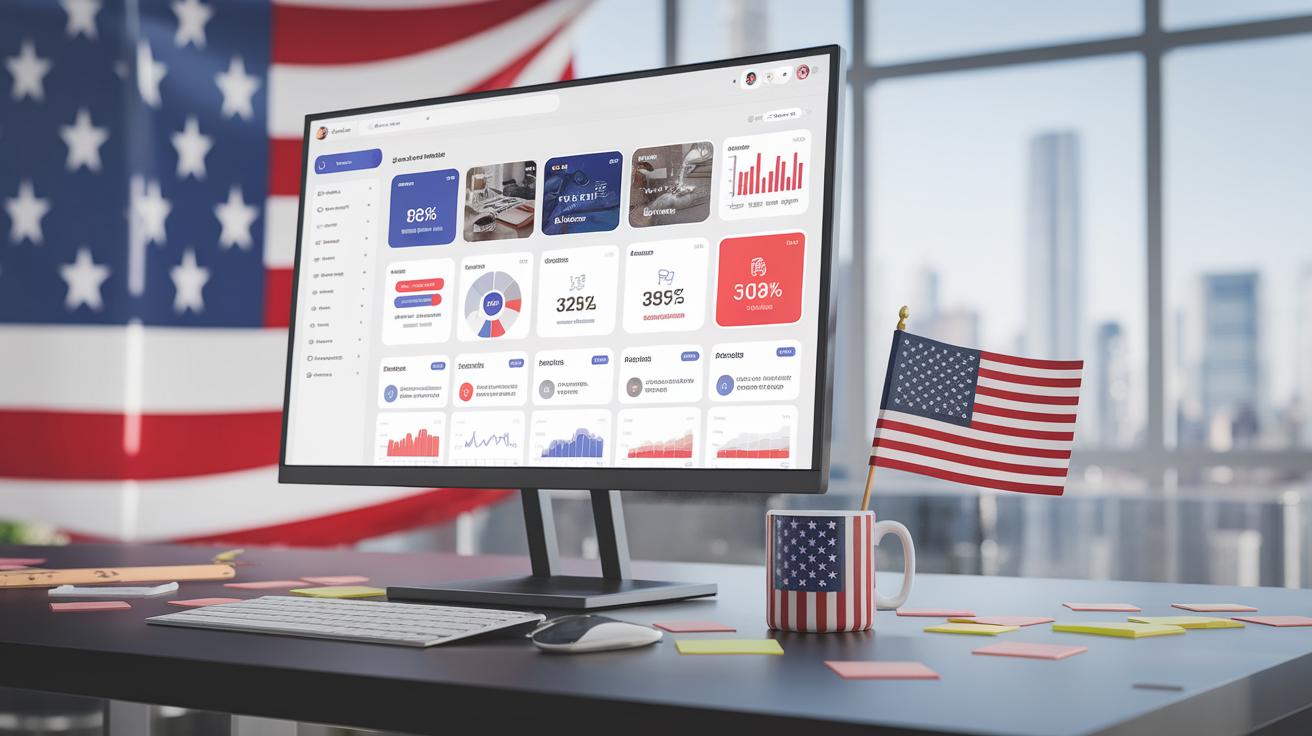Introduction
In today’s technology-driven environment, digital marketing has transformed from a mere promotional tool into a pivotal aspect of brand development and consumer engagement. This article delves into the latest trends in digital marketing and highlights how platforms like Pinterest play a vital role in this evolving landscape. As brands seek authenticity in their messaging and meaningful connections with their audiences, the strategies implemented in digital marketing continue to evolve, offering fresh opportunities for outreach and engagement.
The integration of digital platforms into everyday life has reshaped consumer behavior, urging businesses to adapt. Pinterest, with its unique visual search functionality and user-generated content, has emerged as a prominent player in the digital marketing arena. As we dissect different facets of digital marketing trends, we’ll also examine Pinterest’s unique marketing potential and how it fits into the larger marketing ecosystem. Join us in exploring these dynamic changes and their implications for brands and marketers alike.
Understanding Digital Marketing Basics
Digital marketing refers to the use of digital channels, technologies, and platforms to promote products and services. As businesses increasingly shift their focus to online strategies, understanding the components of digital marketing has become imperative. The main components include search engine optimization (SEO), content marketing, social media marketing, email marketing, and paid advertising. Each of these components plays a significant role in reaching and engaging target audiences. Over the years, digital marketing has evolved significantly, moving from simple banner ads and email campaigns to complex strategies that leverage data analytics, artificial intelligence, and personalized content.
Digital marketing was centered around the growth of the internet in the late 1990s and early 2000s. Brands used basic websites and email marketing to reach potential customers. However, as technology advanced, so did the techniques employed by marketers. The emergence of social media platforms transformed marketing communication, allowing brands to engage in two-way conversations with their audiences. This change initiated a shift from traditional marketing methods to a more interactive and consumer-oriented approach.
As digital marketing continues to evolve, trends such as mobile optimization, video marketing, and influencer partnerships have gained traction. Mobile optimization ensures that websites and content are accessible and user-friendly on mobile devices, reflecting the public’s changing browsing habits. Video marketing harnesses visual storytelling, offering an engaging way to connect with audiences across platforms like YouTube and social media. Similarly, influencer marketing has emerged as a powerful tool, leveraging the reach and credibility of social media personalities to promote products and services.
The role of data in digital marketing cannot be overstated. Businesses harness data analytics to gather insights into consumer behavior, preferences, and engagement patterns. This information facilitates more targeted and effective campaigns, optimizing marketing expenditure and improving return on investment. Furthermore, the integration of artificial intelligence has enabled marketers to automate tasks, analyze data in real-time, and enhance user experiences through personalized content delivery.
Digital marketing is an ever-evolving discipline that adapts to technological advancements and changing consumer behaviors. The focus has shifted from mere visibility to meaningful engagement, as brands find innovative ways to connect with customers in a crowded digital space. Understanding the basics of digital marketing and its continuous evolution is essential for businesses aiming to develop successful strategies that resonate with their audiences.
Current Trends in Digital Marketing Identifying Key Strategies for Business Growth
In the ever-shifting landscape of digital marketing, businesses must adapt to maintain relevance and captivate their target audiences. A focus on personalization continues to dominate, as consumers increasingly expect tailored experiences that resonate with their preferences and behaviors. By utilizing data analytics and user-generated content, brands can craft personalized marketing campaigns that not only engage but also foster loyalty.
Another significant trend is the rise of video content. With platforms like TikTok and Instagram Reels gaining traction, short and engaging videos have become a staple in digital marketing strategies. Businesses are capitalizing on this trend to create authentic storytelling methods that connect them with their audiences. Utilizing live streaming, tutorials, and behind-the-scenes content allows brands to present their products and services dynamically, further enhancing customer interaction.
Artificial intelligence (AI) and machine learning are also playing pivotal roles in transforming the digital marketing sphere. From chatbots that offer immediate assistance to personalized recommendations based on user behavior, AI is enabling businesses to improve customer service and streamline operations. Marketers are harnessing these technologies to automate processes, optimize campaigns, and gain valuable insights from large data sets.
Integrating Influencer Marketing and Social Commerce
Influencer marketing is witnessing a remarkable surge, with brands partnering with influencers to reach targeted demographics authentically. This trend has expanded into social commerce, where social media platforms, including Instagram and Pinterest, integrate e-commerce functionalities, enabling users to shop directly from posts. Businesses can leverage these collaborations to boost their brand visibility while fostering trust with audiences through influencer endorsements.
Pinterest marketing, in particular, is gaining momentum as a powerful tool for businesses aiming to drive traffic and sales. With its visually-driven format, Pinterest serves as an inspiration board for consumers, making it ideal for brands in lifestyle, home decor, and fashion sectors. By creating visually appealing pins and harnessing the platform’s search functionality, businesses can increase their reach and connect with audiences at key decision-making moments.
The importance of adapting to the latest trends in digital marketing cannot be overstated. By emphasizing personalization, video content, AI integration, influencer collaborations, and platforms like Pinterest, brands can ensure they not only survive but thrive in the ever-changing digital ecosystem.
The Impact of Social Media on Digital Marketing
Revolutionizing Digital Marketing Strategies
The advent of social media platforms has significantly transformed digital marketing strategies, creating a paradigm shift in how businesses engage with their audiences. Unlike traditional marketing, which often relied on one-way communication, social media facilitates two-way interactions, allowing brands to build deeper relationships with consumers. This engagement is paramount; brands can now gather real-time feedback, monitor customer sentiments, and adapt their strategies accordingly.
Social media enables targeted marketing through user-generated data. Advertisers can harness extensive insights about user behavior, interests, and demographics to craft personalized ads that resonate with specific segments of the audience. This level of customization not only increases the effectiveness of campaigns but also enhances customer satisfaction and loyalty. For instance, platforms like Facebook and Instagram provide sophisticated algorithms that optimize ad placements to ensure they reach the right users at the most opportune moments.
The role of visuals cannot be understated in the realm of social media. Platforms such as Instagram and Pinterest highlight the importance of engaging visuals in capturing audience attention. Brands are increasingly shifting their focus towards creating visually appealing content that can be easily shared, thereby expanding their reach organically. The viral potential inherent in social media allows businesses to gain traction quickly, especially when content resonates well with the audience, leading to immense visibility and brand awareness.
In the dynamic environment of social media marketing, influencers have emerged as pivotal figures. Collaborating with influencers enables brands to leverage the trust and credibility these individuals have established with their followers. This partnership not only enhances brand visibility but also fosters authenticity, as influencers can effectively convey brand messages in a relatable manner. The shift towards authentic marketing is becoming critical, especially among younger generations who prioritize genuine connections with brands over traditional advertising methods.
The Future of Social Media in Marketing
Looking ahead, the integration of emerging technologies, such as augmented reality (AR) and artificial intelligence (AI), is setting the stage for future developments in social media marketing. These technologies promise to create more immersive and personalized experiences, further blurring the lines between the physical and digital realms. Businesses must stay abreast of these advancements to harness their potential fully, ensuring they remain competitive in an increasingly digital-focused landscape.
Social media platforms have not just changed the dynamics of digital marketing; they have revolutionized them. With their ability to foster engagement, facilitate data-driven decision-making, and enhance content sharing, social media is poised to continue shaping marketing strategies for years to come. Brands that adapt to these changes will likely find themselves at the forefront of the digital marketing paradigm, ready to seize emerging opportunities.
Exploring Pinterest Marketing A Unique Tool in Digital Marketing
The Characteristics That Set Pinterest Apart
Pinterest has steadily emerged as a vital platform within the realm of digital marketing. Unlike traditional social media channels that focus primarily on personal interactions and networking, Pinterest serves as a visual discovery engine. Users come to Pinterest with the intention of finding inspiration, ideas, and products, making it a unique space where marketing can thrive through visual storytelling. This characteristic positions Pinterest not just as a social platform but as a powerful marketing tool for businesses aiming to enhance their visibility and engagement.
One of the most compelling features of Pinterest is its unique user behavior. Users typically browse the platform to seek inspiration for projects, travel destinations, and fashion trends, resulting in a user base that is inherently motivated to discover and make purchases. According to data, 85% of users make purchasing decisions based on pins they have saved, highlighting the potential value of creative and strategic Pinterest marketing. This platform acts primarily as a search engine, offering businesses an opportunity to be featured in the discovery phase of consumer journeys.
Integrating Pinterest into Digital Marketing Strategies
The visual nature of Pinterest allows brands to showcase products in innovative ways through eye-catching images, infographics, and curated collections. Businesses can utilize Pinterest’s pins, boards, and rich media options to effectively communicate their brand stories and engage an audience that is eager for ideas. In contrast to other social media channels, the life cycle of content on Pinterest can be extended far beyond the traditional news feed. A pin can continue to generate traffic and engagement for months or even years after it’s first published, significantly enhancing the return on investment for marketing efforts.
Pinterest’s advertising options, such as promoted pins, allow brands to reach highly targeted demographics. Marketers can leverage audience insights derived from user engagement to tailor content that resonates with specific consumer preferences. By using Pinterest analytics, brands can continually refine their approach, experimenting with different visuals and messaging that align with the impactful trends they observe, thereby maximizing their effectiveness on the platform.
Pinterest’s unique characteristics provide a fertile ground for innovative digital marketing strategies. When integrated thoughtfully into a broader marketing strategy, Pinterest can significantly enhance brand visibility, consumer engagement, and ultimately drive conversions as users transition from inspiration to action.
Content Creation for Pinterest Best Practices for Crafting Tailored Content
Understanding Pinterest’s Unique Format
Creating content for Pinterest requires a nuanced understanding of the platform’s visual-first approach. Unlike other social media channels, Pinterest operates as a discovery tool where users actively seek inspiration and ideas, making the creation of engaging, visually compelling content paramount. High-quality images and videos are essential; pins with rich visuals receive vastly more engagement compared to text-heavy graphics. Using vertical images, preferably in a 2:3 aspect ratio, tends to yield the best results, as they take advantage of the mobile scroll format effectively.
Incorporating Keywords and Descriptions
Effective Pinterest marketing hinges on not just stunning visuals but also strategic keyword usage. Each pin should be optimized with relevant keywords in the title and description to enhance discoverability in search results. Creating detailed descriptions that provide value, include calls to action, and showcase relevant hashtags can significantly improve engagement, encouraging users to save the pin or click through to your linked content. This dual focus on visual appeal and keyword-rich copy is essential for navigating Pinterest’s search engine-like functionality successfully.
Utilizing Rich Pins for Enhanced Engagement
Rich Pins provide additional context about an idea as they automatically sync information from your website. There are three types of Rich Pins: product, recipe, and article, each tailored to provide specific information. For example, product pins display real-time pricing and availability, leading to higher conversion rates. Crafting content that leverages the benefits of Rich Pins can significantly enhance user interaction, making your offerings more accessible and informative.
Creating Inspiring and Relatable Content
Relatability is a key factor in engaging Pinterest users. Content should encompass not only aesthetics but also resonate with users’ interests and aspirations. Integrating lifestyle imagery or user-generated content can foster deeper connections and encourage saves and shares. Additionally, thoughtful storytelling that showcases how your products or services can fit into users’ lives plays a vital role in making content relatable. This approach transforms mere promotion into an inspirational journey.
Monitoring and Adapting Strategies
Continuous monitoring of what types of content create audience engagement is crucial. Insights from Pinterest analytics can guide strategic adaptations, helping marketers understand which pins are driving the most traffic and engaging users effectively. Adapting content based on this data ensures that your approach remains relevant and innovative in line with ongoing trends within the platform.
Integrating Pinterest into a Digital Marketing Strategy
Combining Pinterest with Other Digital Marketing Channels
Pinterest is a unique social media platform that allows users to discover and save ideas through visual content. To maximize its potential within a digital marketing strategy, businesses must integrate Pinterest with other channels. This multifaceted approach not only enhances brand visibility but also engages audiences across various platforms.
One effective strategy involves aligning Pinterest with social media marketing. Brands can share their Pinterest content on platforms like Facebook, Instagram, and Twitter, thereby increasing traffic to their Pinterest boards. Posting eye-catching Pins across social media channels can pique interest, inviting followers to discover more ideas on Pinterest and ultimately driving conversions. Furthermore, utilizing Instagram Stories to showcase Pinterest boards or highlighting popular pins can create excitement and anticipation.
Email marketing is another channel that can benefit from Pinterest integration. By incorporating visually appealing Pins into email campaigns, brands can present curated content that drives subscribers to their Pinterest pages. For instance, a newsletter that features top-performing Pins alongside direct links encourages subscribers to explore more in-depth content on Pinterest, strengthening their connection with the brand.
Search engine optimization (SEO) also plays a critical role in maximizing Pinterest’s effectiveness. Optimizing Pinterest boards and Pins with relevant keywords not only helps in search visibility but also aligns with overall website SEO strategies. Businesses should consider embedding Pinterest content on their websites, such as creating a “Pin It” button next to images, allowing users to save directly to Pinterest. This functionality enhances user engagement while supporting broader digital marketing efforts.
Another innovative strategy involves leveraging influencer partnerships. Collaborating with influencers who have an established presence on Pinterest can amplify a brand’s reach. Influencers can create unique boards featuring the brand’s products, consolidate trust with their followers, and drive substantial traffic to the brand’s Pinterest pages.
Incorporating user-generated content can enrich Pinterest marketing. Encouraging customers to create their own pins featuring the brand’s products allows for authentic interactions. This approach not only cultivates a community but also provides fresh, relatable content that resonates with new audiences.
The balance between these integrated strategies forms a robust digital marketing framework that enhances the impact of Pinterest. When executed effectively, combining Pinterest with other channels creates a seamless experience for users, driving engagement and business growth.
Challenges in Pinterest Marketing
Pinterest marketing holds great potential for brands, but businesses often encounter distinct challenges that can hinder their effectiveness. Understanding these barriers is vital for utilizing Pinterest as a robust digital marketing tool. One prevalent issue is the platform’s emphasis on visual content. Brands must produce high-quality, appealing images that capture user interest since Pinterest is fundamentally an image-centric platform. This requires not only design skills but also an understanding of photographic aesthetics, which can be daunting for companies lacking creative resources.
Another challenge lies in the need for consistent content production. Unlike other social media platforms where posts can be recycled or reposted, Pinterest thrives on fresh content. Regularly updating boards with new pins ensures engagement and visibility. For many businesses, particularly smaller ones, maintaining this frequency can strain resources, leading to potential stagnation in their marketing efforts.
The intricacies of SEO on Pinterest also pose a significant challenge. Although it operates differently from traditional search engines, Pinterest still relies on keyword optimization to drive traffic. Brands must invest time in research to identify the right keywords, incorporate them in descriptions, and choose an appropriate pin format. This often requires a sophisticated understanding of Pinterest’s unique algorithm and changing trends within the platform.
Measuring success on Pinterest can be complex. Standard metrics such as likes and shares do not always translate into sales or brand loyalty. Businesses may find themselves grappling with how to effectively track ROI. Understanding analytics on the platform is essential for optimization, yet many brands find it challenging to interpret data accurately.
Pinterest users tend to engage with niche markets. This means that businesses targeting broader audiences may struggle to connect with relevant users. Tailoring content to resonate with specific interests, while still aiming to reach a wider demographic, demands strategic planning and segmentation.
Changing user behaviors present a continuous challenge for marketers. As trends evolve, what works for audience engagement might shift, requiring ongoing adaptation and experimentation. Staying ahead of these changes can be overwhelming for brands that lack the agility or insight to pivot their strategies promptly.
The Future of Digital Marketing and Pinterest
Speculating on Emerging Trends in Digital Marketing with a Focus on Pinterest’s Evolving Role
The digital marketing landscape is continuously shifting, influenced by advancements in technology and changes in consumer behavior. As marketers eye future strategies, they must recognize Pinterest’s unique position within this evolving terrain. This platform, often seen as a visual discovery engine, is poised for growth, particularly in its ability to support brand storytelling and community engagement. The integration of e-commerce features is likely to enhance its role in digital marketing significantly.
One emerging trend that may redefine Pinterest’s usage is the increasing incorporation of artificial intelligence and machine learning. These technologies can facilitate more personalized experiences for users, delivering tailored content based on individual interests and previous interactions. A system that curates boards and pins in real-time could keep users engaged longer, driving higher conversion rates for marketers. As brands enhance their Pinterest strategies with AI-driven insights, the potential for targeted advertising could reach new heights, providing a smoother path from inspiration to purchase.
Another trend worthy of attention is the rise of video content across all digital platforms. Pinterest has already introduced video pins, which expand the content format available for marketers. Looking forward, the proliferation of short-form video content could become a critical aspect of Pinterest marketing. As consumers increasingly favor video over static images due to its engaging nature, brands will need to pivot their strategies to effectively utilize this format. This shift opens the door for creative storytelling that resonates more profoundly with audiences.
The growing importance of sustainability and social responsibility in consumer choices suggests that Pinterest could serve as a platform for brands focused on ethical marketing. By leveraging Pinterest’s ability to portray visually appealing narratives surrounding eco-friendly practices and products, companies can attract a dedicated audience eager to support sustainable brands.
The expansion of shopping features will enhance Pinterest’s role in driving online sales. With shoppable pins becoming more prevalent, users will experience a seamless transition from discovering an inspiring idea to making a purchase. As e-commerce becomes an integral aspect of Pinterest, businesses that adapt early will likely capitalize on this trend, leveraging it to gain a competitive advantage.
Conclusions
The landscape of digital marketing is continuously morphing, influenced by technological advancements and shifting consumer preferences. As businesses navigate these trends, the importance of integrating effective marketing strategies cannot be overstated. Particularly, platforms such as Pinterest illustrate how visual engagement can revolutionize consumer interactions and enhance brand visibility in an increasingly crowded digital space.
Embracing these trends and recognizing the role of distinctive platforms in digital marketing can empower brands to connect more effectively with their target audiences. By understanding the mechanisms of consumer behavior and adopting innovative approaches, businesses can position themselves for sustained success in the digital marketing sphere.



















